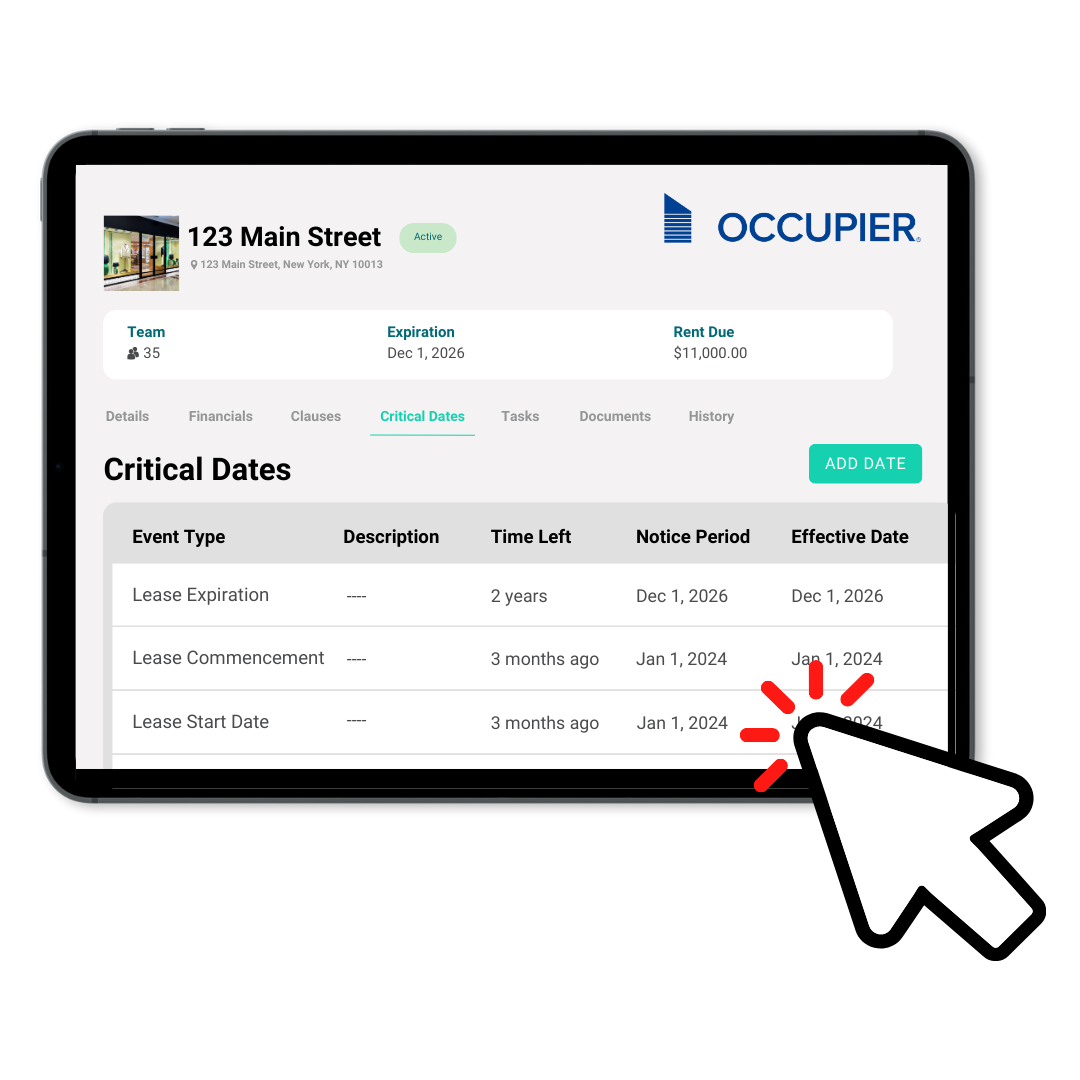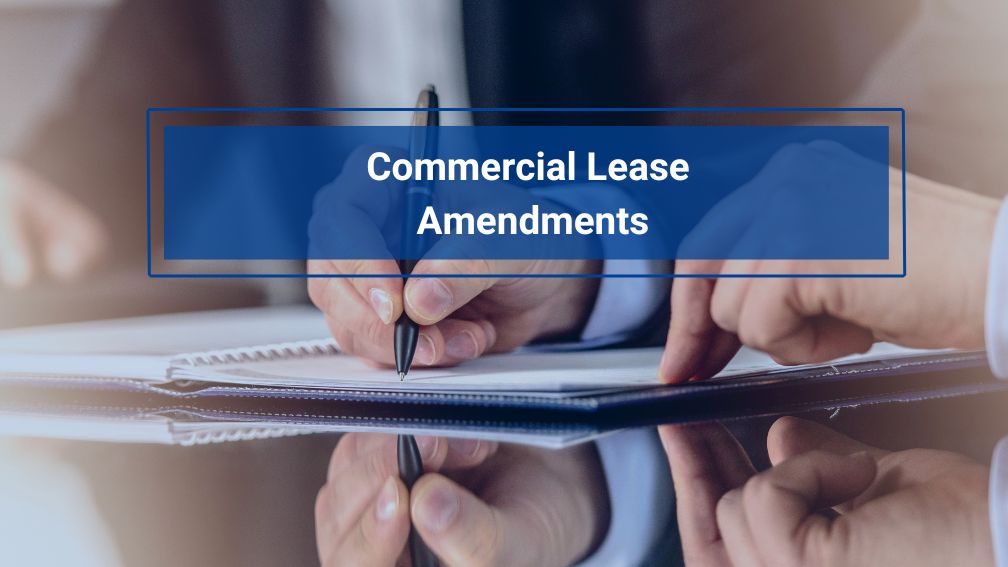Commercial Lease Amendments: How to Navigate Lease Changes
Last Updated on August 22, 2024 by Morgan Beard
Have you ever had to modify your original lease agreement? Well, if yes, then you and your Landlord likely agreed upon an modification to the original contract, in other words, a commercial lease amendment.
This is where commercial lease amendments come into play – they offer the flexibility to adapt your lease agreements to changing circumstances. In this comprehensive guide, we’ll explore how to navigate and negotiate lease amendments with confidence, ensuring that your real estate portfolio remains agile and aligned with your business objectives.
Understanding Commercial Lease Amendments
Commercial lease amendments are formal modifications to existing lease agreements between landlords and tenants. These changes can range from minor adjustments to significant alterations in terms and conditions. As a Head of Real Estate, it’s crucial to understand that lease amendments are not just legal formalities – they’re strategic tools that can significantly impact your company’s bottom line and operational flexibility.
Amendments can be initiated by either party and may be necessary due to various reasons, such as:
- Changes in business needs or market conditions
- Desire to extend or shorten the lease term
- Modifications to the leased space
- Alterations in rent or other financial terms
- Updates to comply with new regulations or laws
By mastering the art of lease amendments, you can ensure that your real estate agreements remain dynamic and supportive of your organization’s evolving needs.
Key Elements to Consider in Lease Amendments
When approaching a lease amendment, it’s essential to consider several critical factors that can significantly impact your organization. Let’s delve into the key elements you should keep in mind:
Financial Implications and Adjustments
One of the primary reasons for pursuing a lease amendment is often financial. As a real estate executive, you need to carefully evaluate the financial implications of any proposed changes. Consider the following aspects:
- Rent adjustments: This could involve negotiating a rent reduction, deferral, or restructuring of payment terms. In some cases, you might even be looking at a rent increase in exchange for other concessions.
- Operating expenses and CAM charges: Amendments may alter the distribution of common area maintenance (CAM) charges or other operating expenses between landlord and tenant.
- Tenant improvement allowances: You might negotiate for additional allowances to renovate or reconfigure the space to meet new business needs.
- Security deposits: The amendment process can be an opportunity to reassess and potentially adjust the security deposit amount.
- Sublease revenue sharing: If your amendment includes provisions for subleasing, consider how any sublease revenues will be shared with the landlord.
Remember, every financial adjustment should be viewed in the context of your overall real estate strategy and its impact on your company’s financial health.
Changes to Lease Terms & Conditions
Lease amendments often involve modifications to the fundamental terms and conditions of the agreement. Key areas to focus on include:
- Lease duration: You may want to extend the lease term for stability or shorten it for flexibility. Each option comes with its own set of negotiation points.
- Renewal options: Consider adding, removing, or modifying renewal options to align with your long-term real estate strategy.
- Space modifications: Amendments can address changes to the leased premises, such as expanding or contracting the space, or altering its configuration.
- Use clauses: You might need to broaden or change the permitted use of the space to accommodate new business activities.
- Maintenance and repair responsibilities: Reassessing the division of maintenance and repair duties between landlord and tenant can be part of the amendment process.
- Signage and branding: Negotiate for improved visibility or branding opportunities within the property.
When considering these changes, always keep your company’s operational needs and future growth plans in mind.
Impact on Tenant Rights & Responsibilities
Lease amendments can significantly affect your rights and responsibilities as a tenant. Pay close attention to:
- Relocation clauses: Negotiate limitations on the landlord’s right to relocate your business within the property.
- Exclusivity rights: If relevant to your business, seek or modify clauses that prevent the landlord from leasing to competitors.
- Default and cure provisions: Ensure that any changes to these clauses are fair and provide adequate protection for your company.
- Insurance requirements: Review and adjust insurance obligations to ensure they align with your company’s risk management strategies.
- Access and security: Address any changes needed in terms of access to the premises, parking, or security arrangements.
By carefully considering these elements, you can ensure that the amended lease continues to protect your interests while providing the flexibility your business needs.
Navigating the Amendment Process
Navigating the lease amendment process requires a strategic approach. Here’s a step-by-step guide to help you through the process:
- Identify the need for an amendment: Regularly review your lease agreements and business needs to proactively identify when amendments might be necessary.
- Gather relevant information: Before approaching your landlord, collect all necessary data to support your case for an amendment. This might include market comparables, financial projections, or business plan changes.
- Draft a proposal: Prepare a clear, concise proposal outlining the desired changes and their rationale. This serves as a starting point for negotiations.
- Initiate discussions with the landlord: Approach your landlord professionally, presenting your proposal and being open to dialogue.
- Negotiate terms: Be prepared for back-and-forth discussions. Prioritize your must-haves while identifying areas where you can be flexible.
- Involve legal counsel: Once you’ve reached an agreement in principle, involve your legal team to draft or review the amendment document.
- Review and finalize: Carefully review the final amendment, ensuring all agreed-upon terms are accurately reflected.
- Execute the amendment: Once both parties are satisfied, sign the amendment and ensure it’s properly recorded and integrated with the original lease.
- Lease Accounting Impact: Once a lease amendment is executed it usually results in a remeasurement for the accounting team. Read more on this in our blog Subsequent Remeasurement of Leases Under ASC 842.
Remember, the key to successful navigation is preparation, clear communication, and a willingness to find mutually beneficial solutions.
Negotiating Lease Amendments with Confidence
As a senior real estate executive, your negotiation skills play a crucial role in securing favorable lease amendments. Here are some strategies to enhance your negotiating position:
- Understand your leverage: Assess your position as a tenant. Are you a major occupier in the building? Is your industry in high demand? Understanding your value to the landlord can strengthen your negotiating stance.
- Know the market: Stay informed about current market conditions, including vacancy rates, rental trends, and concessions being offered to new tenants. This knowledge can help you benchmark your requests.
- Build relationships: Cultivate a positive relationship with your landlord. A history of good communication and timely payments can make them more receptive to your amendment requests.
- Be prepared to walk away: While it’s often preferable to amend an existing lease, be prepared to explore alternatives if negotiations stall. This might include relocating or subleasing options.
- Consider timing: Timing can be crucial in negotiations. For instance, approaching a landlord well in advance of lease expiration might yield better results than last-minute requests.
- Offer something in return: If you’re asking for significant concessions, consider what you can offer in return. This might be a longer lease term, personal guarantees, or taking on additional responsibilities.
- Use data to support your position: Present market data, financial projections, or other relevant information to substantiate your requests.
By approaching negotiations with confidence and a well-prepared strategy, you increase your chances of achieving favorable amendment terms.
Best Practices for Finalizing Lease Amendments
Once you’ve successfully negotiated the terms of your lease amendment, it’s crucial to ensure that the final document accurately reflects the agreed-upon changes and protects your interests. Here are some best practices to follow:
- Clarity is key: Ensure that the language in the amendment is clear, concise, and unambiguous. Avoid jargon or overly complex legal terms that could lead to misinterpretation.
- Cross-reference with the original lease: The amendment should clearly state which sections of the original lease are being modified, replaced, or deleted. This helps prevent confusion and potential conflicts between the original lease and the amendment.
- Address all agreed-upon points: Double-check that all negotiated terms are included in the amendment. Even small details can have significant implications down the line.
- Consider future implications: Think about how the changes might affect your rights and obligations in the future. For example, if you’re extending the lease term, consider how this might impact future renewal options or exit strategies.
- Seek legal review: Always have your legal counsel review the final amendment before signing. They can spot potential issues and ensure that your interests are fully protected.
- Obtain necessary approvals: Ensure that all required internal approvals are obtained before signing the amendment. This might include board approval, depending on your company’s governance structure.
- Keep thorough records: Once the amendment is signed, make sure it’s properly filed and easily accessible. Consider creating a summary document that outlines the key changes for quick reference.
- Update relevant stakeholders: Inform all relevant parties within your organization about the lease amendment and its implications. This might include finance, operations, and facilities management teams.
By following these best practices, you can ensure that your lease amendment is not only favorable but also legally sound and operationally effective.
Maintaining a Flexible Lease Agreement
In today’s dynamic business environment, maintaining flexibility in your lease agreements is more important than ever. Here are some strategies to ensure your leases remain adaptable:
- Regular lease reviews: Schedule periodic reviews of your lease portfolio to identify opportunities for amendments or renegotiations. This proactive approach allows you to address changing needs before they become urgent.
- Build flexibility into initial agreements: When negotiating new leases, include clauses that allow for future flexibility, such as expansion or contraction options, early termination rights, or the ability to sublease.
- Stay informed about market trends: Keep abreast of changes in the commercial real estate market. Understanding trends in workspace design, technology integration, and sustainability can help you anticipate future amendment needs.
- Maintain open communication with landlords: Foster good relationships with your landlords. Regular check-ins can help you address small issues before they become major problems and make future amendment negotiations smoother.
- Consider master lease agreements: For companies with multiple locations, master lease agreements with built-in amendment processes can provide a framework for easier modifications across your portfolio.
- Leverage technology: Utilize lease management software to track key dates, terms, and conditions across your portfolio. This can help you identify amendment opportunities and manage the process more efficiently.
- Plan for contingencies: Include provisions in your leases that address potential future scenarios, such as changes in business structure, mergers, or acquisitions.
By maintaining this flexible approach, you can ensure that your real estate portfolio remains aligned with your organization’s evolving needs and strategic objectives.
Mastering the art of commercial lease amendments is a crucial skill for any senior real estate executive. By understanding the key elements involved, navigating the process effectively, and maintaining a flexible approach, you can ensure that your lease agreements continue to support your organization’s success. Remember, every amendment is an opportunity to optimize your real estate strategy and create value for your company.

Product Tour
Take a self-guided tour and see how the fastest-growing commercial tenants leverage Occupier for lease management & lease accounting.
